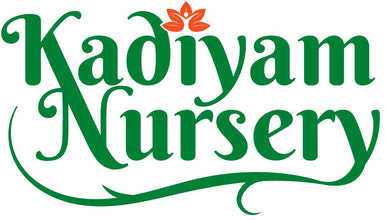-
Common name:
- Palmyra Palm, Toddy Palm, Lontar Palm, Talauriksha Palm,Rontar Palm, Wine Palm
- Regional name:
- Marathi - Tad; Hindi - Tar, Tae; Tamil - Panai; Malayalam - Pana; Telugu - Tadichettu, Bengali - Tal, Gujarati - Tad, Kannada - Tale Mara, Sanskrit - Tal.
- Category:
-
Palms and Cycads, Trees, Fruit Plants, Medicinal Plants
- Family:
- Palmae or Coconut family
-
Introduction
The Palmyra palm (Borassus flabellifer) is a versatile and hardy tree native to South Asia and Southeast Asia. It is known for its adaptability to various climates and soil types, making it a valuable resource for food, drink, and other uses. This guide will provide essential information on the Palmyra palm tree and its cultivation, including planting, growing, care, and benefits.
Plantation
-
Site selection: Palmyra palm trees thrive in tropical and subtropical climates. Choose a sunny location with well-draining soil. They can tolerate a variety of soil types, from sandy to clay, but prefer slightly acidic to neutral soil.
-
Planting time: The best time to plant Palmyra palm trees is during the rainy season, as this provides ample moisture for root development.
-
Spacing: Palmyra palms require ample space for proper growth. Plant saplings at least 20-25 feet apart to ensure proper root development and prevent overcrowding.
Growing
-
Watering: While Palmyra palms are drought-tolerant, they benefit from consistent watering, especially during the first few years of growth. Water the trees deeply and regularly to maintain soil moisture.
-
Fertilization: Apply a balanced, slow-release fertilizer to provide essential nutrients. Follow the manufacturer's instructions and avoid over-fertilization, which can lead to weak growth.
-
Pruning: Regular pruning is not necessary, but removing dead leaves and flower stalks can promote overall tree health and appearance.
Care
-
Pest and disease control: Palmyra palms are generally resistant to pests and diseases. However, monitor the trees for any signs of infestations or infections and treat accordingly with appropriate insecticides or fungicides.
-
Protection: In areas prone to high winds or storms, consider staking young trees to provide support and prevent damage.
Benefits
-
Food: The fruit of the Palmyra palm can be consumed fresh or used to produce jaggery, a traditional sweetener. The seeds can be eaten raw or boiled and are a rich source of dietary fiber and nutrients.
-
Drink: The tree's sap, known as "toddy," can be fermented into a nutritious and refreshing beverage.
-
Timber and fiber: The trunk and leaves of the Palmyra palm can be used for construction materials, furniture, and handicrafts. The fibers from the leaves are also utilized for making ropes, mats, and baskets.
-
Ecological benefits: Palmyra palms help prevent soil erosion, act as a natural windbreak, and provide habitat for various birds and insects.
-
Medicinal uses: Various parts of the Palmyra palm have been used in traditional medicine for treating ailments such as digestive disorders, skin conditions, and respiratory issues.
In conclusion, the Palmyra palm tree is a valuable and versatile plant with numerous uses and benefits. With proper care and maintenance, it can be a productive addition to your landscape or farm.




